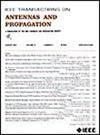Limited CSI Feedback System for Massive MISO: A Neural Network-Aided SVD Approach
IF 4.6
1区 计算机科学
Q1 ENGINEERING, ELECTRICAL & ELECTRONIC
引用次数: 0
Abstract
This article introduces a novel approach for a limited but important form of channel state information (CSI) feedback in massive multiple-input single-output (MISO) systems. Leveraging feedforward neural network (FFNN) enhancement to estimate the singular values of the channel, the proposed method optimizes the estimation of channel characteristics between access points (APs) and user equipment (UE). Through the exchange of dominant singular values, the joint neural network system enables an accurate estimation of channel singular values despite noisy channel constraints. This innovative technique significantly improves the efficiency and scalability of channel characteristic estimation in complex MISO environments, representing a substantial advancement in wireless communication systems. Simulations for a complex Gaussian channel and a 2-D indoor scenario at the L band with a channel rank of 16 confirm the joint FFNN’s ability to estimate all channel singular values by measuring only the received signal using four orthogonal beams, and a measurement campaign at the millimeter frequency band validates the estimation of 32 singular values using eight orthogonal DFT beams. Moreover, the neural network exhibits superior robustness to noisy channels compared with conventional deterministic sample mean estimation methods. Finally, it is shown that the performance of FFNN improved using the attention mechanism.大规模MISO的有限CSI反馈系统:一种神经网络辅助SVD方法
本文介绍了一种在大规模多输入单输出(MISO)系统中有限但重要的信道状态信息(CSI)反馈形式的新方法。该方法利用前馈神经网络(FFNN)增强估计信道的奇异值,优化了接入点(ap)和用户设备(UE)之间信道特性的估计。通过优势奇异值的交换,联合神经网络系统能够在有噪声的信道约束下准确估计信道奇异值。这种创新技术显著提高了复杂MISO环境下信道特征估计的效率和可扩展性,代表了无线通信系统的重大进步。对L波段的复杂高斯信道和信道等级为16的二维室内场景的模拟证实了联合FFNN通过仅使用四个正交波束测量接收信号来估计所有信道奇异值的能力,并且在毫米频段的测量活动验证了使用八个正交DFT波束估计32个奇异值的能力。此外,与传统的确定性样本均值估计方法相比,神经网络对噪声信道具有更好的鲁棒性。最后,研究表明,使用注意机制后,FFNN的性能得到了提高。
本文章由计算机程序翻译,如有差异,请以英文原文为准。
求助全文
约1分钟内获得全文
求助全文
来源期刊
CiteScore
10.40
自引率
28.10%
发文量
968
审稿时长
4.7 months
期刊介绍:
IEEE Transactions on Antennas and Propagation includes theoretical and experimental advances in antennas, including design and development, and in the propagation of electromagnetic waves, including scattering, diffraction, and interaction with continuous media; and applications pertaining to antennas and propagation, such as remote sensing, applied optics, and millimeter and submillimeter wave techniques

 求助内容:
求助内容: 应助结果提醒方式:
应助结果提醒方式:


